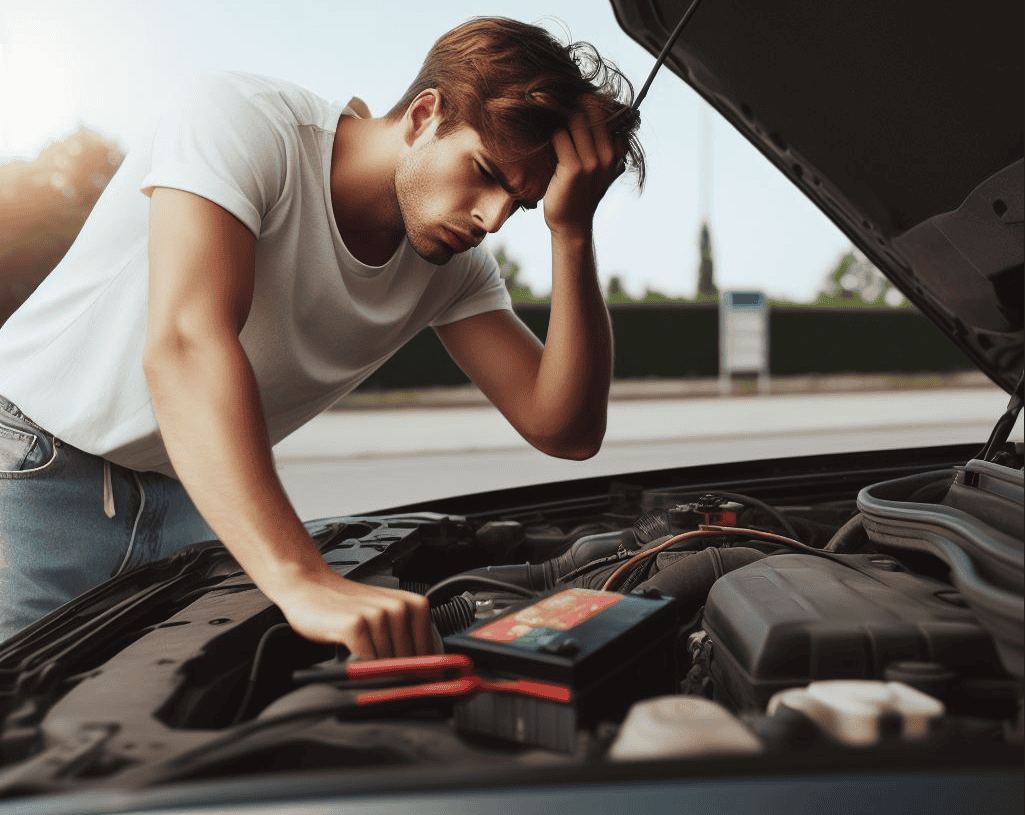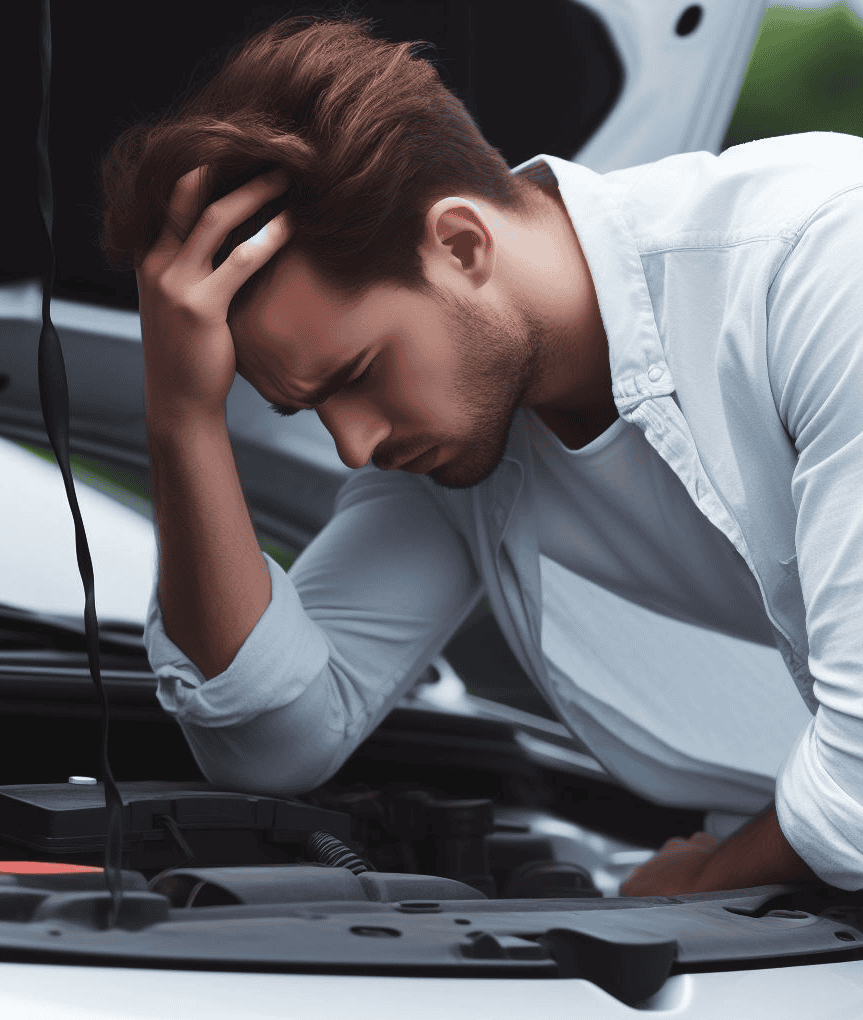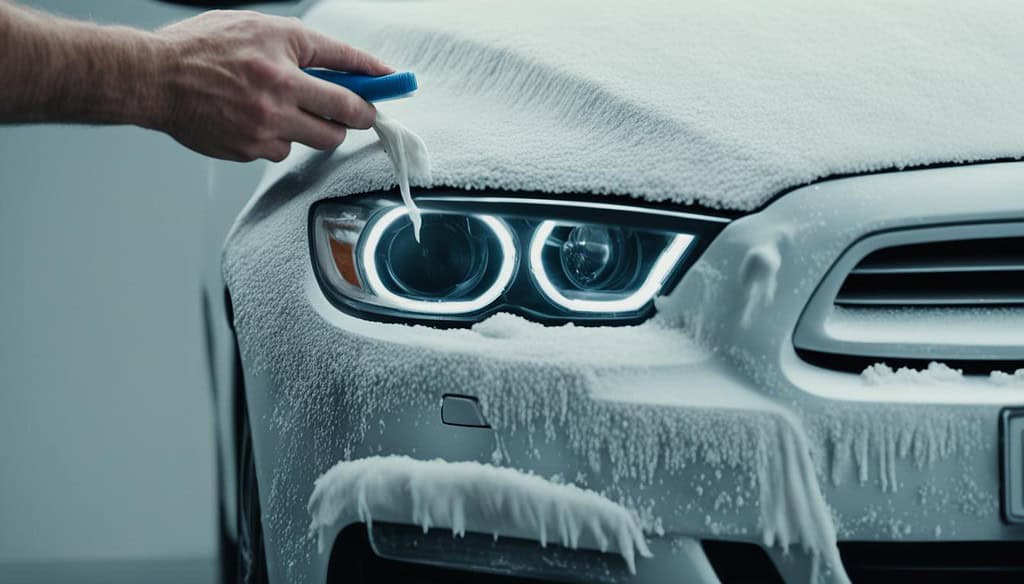Picture this: you’re in a rush to get somewhere important, and just as you turn the key in your car’s ignition, you hear that dreaded sound – a feeble attempt to start the engine, followed by silence. Your car battery has died. It’s happened to me, and I know the feeling of frustration and helplessness that comes with it.
But fear not, because, in this guide, I’m going to walk you through exactly what to do when your car battery decides to give up on you. Whether you’re a seasoned driver or a newbie behind the wheel, understanding how to handle this common vehicular hiccup is crucial. So, join me as we explore the essential steps to take when faced with a dead car battery – because being prepared can make all the difference.
Let’s roll up our sleeves and dive into this handy emergency guide, so you’ll never have to be stranded with a dead battery again. Are you ready to get started?
- Signs that your car battery might be dying
- Understanding the reasons behind a dead car battery
- Safety precautions to take when dealing with a dead car battery
- Checking for any obvious issues before assuming it's a dead battery
- How to jumpstart your car with the help of another vehicle
- Jumpstarting your car using a portable jump starter
- Tips for safely jumpstarting your car
- Exploring alternative methods to jumpstart your car without another vehicle
- How to properly maintain your car battery to prevent it from dying
- The importance of regularly checking your car battery's health
- When is it time to replace your car battery instead of jumpstarting it?
- Tips for choosing the right replacement car battery
- Preventive measures to avoid car battery issues in the future
Signs that your car battery might be dying
When your car battery starts showing signs of trouble, it can be a frustrating experience.
Battery failure is a common issue that car owners face, and it often occurs unexpectedly.
One of the most obvious signs that your car battery might be dying is when your car won’t start. You turn the key, but the engine won’t crank, and the vehicle won’t turn over.
In this situation, jump-starting your car with the help of another vehicle or a portable jump starter can be a lifesaver.
However, before assuming it’s a dead battery, it’s important to check for any obvious issues such as loose connections or corrosion on the battery terminals. Make sure to take necessary safety precautions and have a set of jumper cables handy in case you need to jumpstart your car.
Being stranded with a car that won’t start can be an emergency situation, but it’s important to stay calm and take the proper precautions. If you don’t have access to jump-start assistance from a friend or a roadside assistance service, you might need to call a towing service or a tow truck to get your vehicle to a mechanic.
However, before resorting to that, you can try jump-starting the car yourself using the instructions found in your car owner’s manual or vehicle handbook.
By following the proper jumpstart procedure, you might be able to get your car back on the road without the need for outside help.
Remember to always prioritize safety by turning on your hazard lights, wearing protective gear, and following any safety guidelines provided with your jumper cables or portable jump starter. Taking preventive measures and maintaining your car battery’s health is crucial to avoid being in such situations in the first place.
Understanding the reasons behind a dead car battery
 When it comes to understanding the reasons behind a dead car battery, there are a few key factors to consider. One common culprit is leaving your car lights or accessories on for an extended period of time, draining the battery.
When it comes to understanding the reasons behind a dead car battery, there are a few key factors to consider. One common culprit is leaving your car lights or accessories on for an extended period of time, draining the battery.
Forgetfulness can easily lead to this kind of mistake, especially if you’re in a rush or distracted.
Another reason could be a faulty charging system, such as a malfunctioning alternator or voltage regulator. This can prevent your battery from receiving a proper charge, ultimately causing it to die. It’s always important to keep an eye out for any warning signs, such as dimming headlights or a flickering dashboard, as these may indicate an issue with the charging system.
Extreme weather conditions can also contribute to a dead car battery. In cold temperatures, the chemical reactions inside the battery slow down, reducing its performance. This means it may struggle to supply enough power to start your car.
On the other hand, hot weather can lead to the evaporation of battery fluid, which can damage the internal components and reduce its lifespan.
It’s important to keep in mind that these factors can vary depending on your car’s make and model, as well as the condition of your battery.
Being aware of the potential causes of a dead car battery can help you take preventive measures and avoid any unpleasant surprises.
Safety precautions to take when dealing with a dead car battery
Safety precautions are crucial when dealing with a dead car battery.
First and foremost, it is essential to ensure that you are in a safe location, away from traffic and any potential hazards.
Once you have parked your vehicle, make sure to engage the parking brake and turn off the ignition. This will prevent any accidental starts or movement of the car while you work on the battery.
Another important safety measure is to wear protective gear, such as gloves and safety glasses, to shield yourself from any potential battery acid or debris.
It is also advisable to keep a fire extinguisher nearby in case of any mishaps. Remember, safety should always be your top priority when dealing with a dead car battery.
Checking for any obvious issues before assuming it’s a dead battery
As a car owner, it’s important to troubleshoot and eliminate any obvious issues before jumping to the conclusion that your battery is dead. This simple step can save you time and potentially prevent unnecessary expenses. Start by checking the battery terminals for any signs of corrosion or loose connections.
If you notice a buildup of white or greenish residue, gently clean the terminals with a mixture of baking soda and water using a wire brush or toothbrush. Ensure that the connections are tight and secure.
Next, inspect the battery cables for any signs of damage or fraying. If you notice any cracks or exposed wires, it’s crucial to address them immediately as they can cause electrical issues and hinder the battery’s performance.
Additionally, check the battery case for any leaks or bulges. A damaged case can lead to acid leaks, which can be hazardous and also cause the battery to lose its charge. If you spot any leaks or bulges, it’s best to have the battery replaced by a professional.
How to jumpstart your car with the help of another vehicle
Jumpstarting your car with the help of another vehicle can be a lifesaver in a situation where your battery has died. It’s a relatively simple process that requires just a few steps.
First, park the vehicle with the working battery next to your car, ensuring that the two batteries are within reach of each other.
Next, make sure both vehicles are turned off and in park or neutral. It’s important to connect the jumper cables in the correct order to avoid any damage to the electrical system.
Start by attaching one end of the positive (+) cable to the positive terminal of the dead battery, then connect the other end of the positive (+) cable to the positive terminal of the working battery. It’s crucial to ensure a solid connection by gripping the clamps tightly to the terminals.
Likewise, connect one end of the negative (-) cable to the negative terminal of the working battery and the other end to a metal surface on the car with the dead battery.
This metal surface acts as a grounding point, helping to prevent any sparking.
Now, it’s time to start the working vehicle and let the engine run for a few minutes, allowing the dead battery to charge.
After some time has passed, attempt to start your car. Upon success, keep both vehicles running for a few more minutes to ensure sufficient charge.
Finally, carefully disconnect the jumper cables in the reverse order by removing the negative (-) cable from the metal surface, followed by disconnecting the negative (-) cable from the working battery, the positive (+) cable from the working battery, and lastly, the positive (+) cable from the dead battery’s positive terminal.
Remember to drive your car for at least 30 minutes to recharge the battery fully.
Jumpstarting your car with the help of another vehicle is a straightforward process; however, it’s essential to pay attention to certain precautions.
Always wear safety glasses and gloves, as battery acid can be harmful if it comes in contact with your skin or eyes. Moreover, ensure that both vehicles are turned off and the ignition keys are removed before connecting the jumper cables. It’s crucial to make sure the cables are not twisted or tangled, as this can result in electrical issues.
Additionally, before attempting to jumpstart your car, it’s essential to carefully inspect the battery for any signs of damage, leakage, or corrosion. If you notice any of these issues, it’s best to seek professional assistance. Lastly, always consult your vehicle’s manual for any specific instructions or recommendations regarding jumpstarting.
Remember, the method outlined here is a basic guide, and different vehicles may require slightly different procedures. By following these precautions and steps, you can safely jumpstart your car using another vehicle and get back on the road in no time.
Jumpstarting your car using a portable jump starter
I remember the first time I had to jumpstart my car using a portable jumpstarter. It was a bit nerve-wracking because I had never done it before, but with a little guidance, it turned out to be a straightforward process. The first thing I did was make sure that both my car and the portable jump starter were turned off.
Then, I connected one end of the red positive cable to the positive terminal of my car’s battery and the other end to the corresponding terminal on the portable jump starter.
With the red cable securely connected, I moved on to the black negative cable.
I attached one end to the negative terminal on the portable jump starter and the other end to a metal part of the engine block in my car. It’s important to note that you should never directly connect the black cable to the negative terminal of the dead battery, as this can cause sparks.
Once all the connections were in place, I turned on the portable jump starter and waited a few minutes for the dead battery to charge.
Tips for safely jumpstarting your car
As someone who has dealt with a dead car battery on multiple occasions, I can understand the frustration and urgency of jumpstarting your vehicle. To ensure a safe and successful jumpstart, here are a few tips to keep in mind.
Firstly, it’s crucial to have a set of jumper cables in your car at all times. These cables should be in good condition, with no exposed wires or frayed ends.
Additionally, make sure to wear gloves and safety goggles while handling the cables, as battery acid can be harmful.
Before connecting the cables, identify the positive and negative terminals on both vehicles.
The positive terminal is typically marked with a “+” sign or a red color, while the negative terminal is usually marked with a “-” sign or a black color.
Ensuring the correct connection is vital to avoid any damage to the batteries or electrical systems.
Exploring alternative methods to jumpstart your car without another vehicle
In my experience, I have found that there are alternative methods to jumpstart a car without relying on another vehicle.
One such method is using a portable power bank or jumpstarter. These compact devices are equipped with enough power to jumpstart a dead battery.
Simply connect the jump starter to the battery following the instructions, and you can quickly get your car up and running without needing to flag down another driver.
Another alternative method to jumpstart your car is by utilizing a battery charger. These chargers can be connected directly to the dead battery and provide a slow and steady charge, allowing the battery to regain enough power to start the engine.
This method is especially useful if you have access to an electrical outlet nearby. However, it is important to note that charging a dead battery can take a significant amount of time, so it may not be the most practical option if you’re in a hurry.
How to properly maintain your car battery to prevent it from dying
Now that we understand the importance of maintaining our car battery, let’s talk about some practical tips to prevent it from dying.
First and foremost, regular cleaning is essential.
Dirt and debris can accumulate on your battery terminals, leading to poor electrical contact and drainage. To tackle this, you should use a mixture of baking soda and water to gently scrub the terminals and connectors with a wire brush.
Afterward, rinse off the residue with clean water and ensure everything is dry before reattaching the connectors.
Secondly, keeping an eye on your battery’s fluid levels is crucial. Most modern car batteries are sealed, but for those that have removable caps, it’s vital to check the fluid level regularly. If it’s below the recommended mark, you should top it up with distilled water.
However, it’s essential not to overfill because it can lead to acid leakage and damage your battery.
Additionally, make sure to inspect your battery case for any signs of cracks or damage.
If you notice any, it’s time for a replacement to avoid further complications.
Make it a habit to:
- Regularly clean the battery terminals and connectors using a mixture of baking soda and water
- Gently scrub with a wire brush and rinse off the residue with clean water
- Ensure everything is dry before reattaching connectors
- Check the battery’s fluid levels regularly, especially for batteries with removable caps
- Top up with distilled water if below the recommended mark, but avoid overfilling to prevent acid leakage
- Inspect battery case for cracks or damage; replace if necessary to avoid complications.
The importance of regularly checking your car battery’s health
Regularly checking your car battery’s health is crucial to ensure that your vehicle stays running smoothly. Neglecting to do so could lead to unexpected breakdowns and inconvenient situations.
One of the most noticeable signs that your battery might be on the verge of dying is a slow engine crank. If you find that your car takes longer to start than usual or if you hear a clicking sound when you turn the ignition, it may be time to check your battery.
Another key indicator is dimming or flickering headlights. If you notice that your headlights are not as bright as they used to be, it could be a sign that your battery is not holding a charge properly. Taking the time to regularly inspect your car battery will help you catch any issues early on and avoid potential mishaps down the road.
In addition to preventing unexpected breakdowns, regularly checking your car battery’s health can also save you money in the long run.
A weak or dying battery can place additional strain on other components of your vehicle, such as the alternator and starter. If these parts have to work harder to compensate for a weak battery, they may wear out faster and require costly repairs or replacements.
By regularly monitoring the health of your car battery, you can identify potential issues early on and address them before they cause further damage to your vehicle. This proactive approach can ultimately help you save money by avoiding more significant repairs in the future.
When is it time to replace your car battery instead of jumpstarting it?
As a car owner, it’s important to know when it’s time to replace your car battery instead of relying on jumpstarting it.
While jumpstarting can serve as a temporary solution, there are instances when a replacement becomes necessary.
One key indicator is the age of the battery.
Typically, car batteries have a lifespan of around three to five years. If your battery is nearing or has already surpassed this timeframe, it’s likely time to consider getting a new one.
Another sign that a replacement is in order is if your battery frequently becomes dead or fails to hold a charge.
If you find yourself having to jumpstart your car on a regular basis or your battery drains quickly even after recharging, it’s a clear indication that an old battery may be causing these issues.
Additionally, if you notice visible signs of damage or corrosion on the battery terminals, it’s best to replace them to avoid any further complications.
Tips for choosing the right replacement car battery
When it comes to choosing the right replacement car battery, there are a few key factors to consider.
Firstly, you’ll want to make sure you select a battery that is compatible with your vehicle’s make, model, and engine size. This information can usually be found in your car’s owner’s manual or by consulting with a trusted mechanic.
In addition, it’s important to consider the battery’s capacity or cold cranking amps (CCA). The CCA rating indicates the battery’s ability to start your vehicle in cold weather conditions.
It’s generally recommended to choose a battery with a higher CCA rating if you live in an area with harsh winters.
On the other hand, if you reside in a warmer climate, you can opt for a battery with a slightly lower CCA rating.
Furthermore, battery brands and warranties are worth considering. While there are numerous brands in the market, it’s advisable to choose a reputable and trusted manufacturer known for producing reliable batteries.
Additionally, check for the length and coverage of the warranty offered by the brand. A longer warranty period can provide you with added peace of mind should any issues arise with your new battery.
Preventive measures to avoid car battery issues in the future
As someone who has experienced the frustration of a dead car battery, I can tell you that there are preventive measures you can take to avoid this issue in the future.
One of the most important steps is to regularly check the battery’s health. This can be done by inspecting the battery for any signs of damage or corrosion, as well as testing its voltage using a multimeter.
By keeping a close eye on your battery’s condition, you can catch any potential issues early on and take appropriate action.
Another preventive measure is to minimize the strain on your car battery. This can be achieved by avoiding excessive use of electrical components when the engine is not running, such as keeping the radio on for prolonged periods or leaving the headlights on.
Additionally, it’s important to ensure that all electrical connections are secure and free from corrosion. Loose or damaged connections can cause the battery to drain faster, so regular inspection and maintenance of these connections is essential. By implementing these preventive measures, you can greatly reduce the chances of encountering future car battery issues.
FAQ
What are the signs that my car battery might be dying?
Some signs that your car battery might be dying include a slow or struggling engine start, dim headlights or interior lights, a strange smell coming from the battery, or a battery warning light on your dashboard.
Why does a car battery die?
Car batteries can die due to a variety of reasons, including old age, extreme temperatures, leaving lights or electronics on when the engine is off, a faulty charging system, or a parasitic drain.
What safety precautions should I take when dealing with a dead car battery?
When dealing with a dead car battery, it’s important to wear gloves and safety glasses, avoid smoking or using open flames near the battery, and be cautious of battery acid or corrosion.
Should I check for any obvious issues before assuming it’s a dead battery?
Yes, it’s always a good idea to check for any obvious issues before assuming it’s a dead battery. Make sure the battery terminals are clean and secure, and check for any loose or damaged connections.
How can I jumpstart my car with the help of another vehicle?
To jumpstart your car with the help of another vehicle, you will need jumper cables and a working car with a charged battery. Connect the positive (red) cable to the positive terminal of the dead battery, then connect the other end of the positive cable to the positive terminal of the working battery. Connect the negative (black) cable to the negative terminal of the working battery, then attach the other end of the negative cable to a metal ground on the dead car (such as a bolt or bracket). Start the working car, let it run for a few minutes, then try starting your car.
How can I jumpstart my car using a portable jump starter?
To jumpstart your car using a portable jump starter, make sure the jump starter is fully charged. Connect the positive (red) cable to the positive terminal of your car battery, then connect the negative (black) cable to a metal ground on your car. Turn on the jump starter, then try starting your car.
What tips should I follow to safely jumpstart my car?
Some tips for safely jumpstarting your car include making sure both vehicles are turned off, ensuring the cables are not tangled or touching each other, and starting the working car before attempting to start the dead car.
Are there alternative methods to jumpstart my car without another vehicle?
Yes, there are alternative methods to jumpstart your car without another vehicle. Some options include using a jump box or jump pack, using a battery charger, or calling for roadside assistance.
How can I properly maintain my car battery to prevent it from dying?
To properly maintain your car battery, you should regularly check the battery terminals for corrosion, keep the battery clean and dry, avoid leaving lights or electronics on when the engine is off, and have your charging system tested regularly.
How important is it to regularly check my car battery’s health?
Regularly checking your car battery’s health is important because it allows you to catch any potential issues early on and prevent unexpected breakdowns. It also helps ensure that your battery is functioning properly and has enough charge to start your car.
When is it time to replace my car battery instead of jumpstarting it?
It is time to replace your car battery instead of jumpstarting it when it is consistently unable to hold a charge, has reached its expected lifespan (typically around 3-5 years), or has a significant amount of corrosion or damage.
What should I consider when choosing the right replacement car battery?
When choosing the right replacement car battery, you should consider factors such as the correct size and fit for your vehicle, the battery’s reserve capacity and cold cranking amps, and reputable brands with good customer reviews and warranties.
What preventive measures can I take to avoid car battery issues in the future?
Some preventive measures to avoid car battery issues in the future include regularly maintaining your battery, avoiding overuse of electronics when the engine is off, storing your car in a garage or shaded area during extreme temperatures, and having your battery and charging system checked during routine vehicle maintenance.





